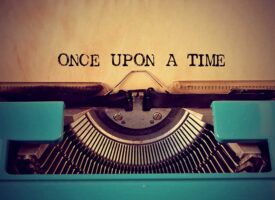The weather is so much more than how wet you’re getting. It’s amazing how many writers overlook the weather as a useful tool in both setting and also in telling the story.
Many years ago, we relied on the weather and took it seriously. Poor weather affected crops and livestock. Bad weather would even affect health – be it through famine or disease.
Nowadays we have supermarkets that will fly in food from around the world and central heating and air conditioning to ensure that whatever is happening outside, we don’t need to vary the climate inside our home.
But it’s deeper than that. Seasons reflect aspects of life and weather can be a great barometer (pun intended) for emotions.
In reality, we all react slightly differently to the weather. Some love the heat and others despise it. Even considering these variances, the majority of people will react similarly to most climactic conditions.
The English language is littered with idioms that reference the season or the specific weather. They don’t need explaining; we
all understand exactly what people mean when they use one. That’s because they are understood as a subconscious level.
Weather Conveys Different Moods
Spring = hope, new birth
Summer = adulthood, happiness
Autumn = preparing for old age
Winter = death
Sunshine = happiness, goodness
Storm = trouble, a change
Calm before the storm = trouble or a change ahead
Rainbow = hope, a link between two extremes (sun and rain)
Cloudy = confused, muddled, unclear
Clouds on horizon = trouble ahead
No wind = no change
Windy = changes
Rough weather = problems
Fog = confusion, unaware
Rain = depressed, badness
Snow = coldness, cleansing
How to Use Weather in a Setting
This makes weather an ideal setting tool to convey what’s going on in the story or in a character’s head.
You don’t need to use the sledgehammer approach but I’d also exercise caution at being too clever. A few references, subtle ones, dropped in during a scene will convey the message.
As an example, if you used the rain as a portent for something bad about to happen, don’t have the character thinking, ‘It’s starting to rain and rain is a bad thing.’
Instead, reference the changing light – from bright to muted grey tones. You could even describe the rain, or its effect as resembling something inherently evil. The use of metaphors and weather work well.
Mention the noise that the rain brings; reference something having to stop because of the weather. Consider how inanimate objects react to the weather – or even how the characters change.
How does the rain affect textures? How does it change how things sound? Does its own noise drown out something the character was listening to? Does it simply stop whatever was making a noise? Does it therefore bring silence?
How does it affect the character’s senses? Does it affect what they’re doing? And be subtle here – does it affect their mood?
Remember to build the mood; don’t dunk the reader in it. Sometimes a sudden change in mood is necessary and an equally sudden change in weather is appropriate but this is likely to be the exception to the rule.
Sometimes the change, or even the manner of the change, is as important as the weather itself.
Let the reader join the dots. If you’ve positioned them well enough, they’ll get the picture. You don’t need to go over them with a wax crayon to convey the message.
Finally, never forget that setting is an integral part of writing a novel. Despite this, the use of weather is just one tool to set the scene – not your only one.
About the Author:
Mark Walton is the author of 46 Ways to Improve Your Plotting, a self-help guide for writers. If you want to improve your chances of getting a story published then visit http://www.betternovelwriting.com/Plotting.htm and see how quickly and easily your writing can advance.


